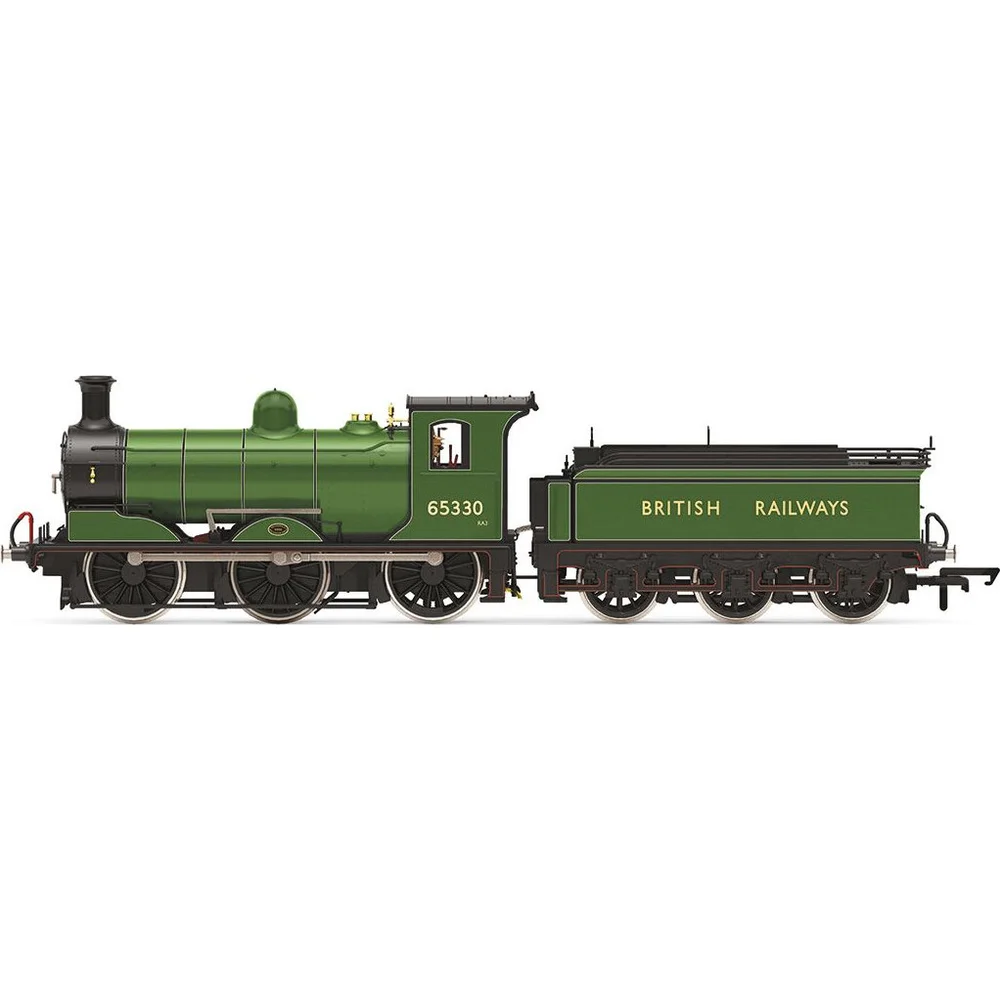Hornby R3859
London & North Eastern Railway J36 65330 British Railways Green
Class & Prototype
- Class: London & North Eastern Railway J36
- Traction: Steam
- Built: 1888-1901
- Total Built: 168
- Running Number: 65330
The NBR C Class (LNER J36) was a class of 168 robust 0-6-0 freight locomotives designed by Matthew Holmes and introduced in 1888 for the North British Railway. Known as the "Eighteen Inchers" due to their unusually large 18-inch cylinders, these locomotives became Scotland's most enduring steam design, with 123 examples surviving into British Railways ownership. Twenty-five served with distinction in France during WWI, returning with commemorative battle names. Rebuilt with larger boilers between 1913-1923, they adapted from freight work to mixed traffic duties, ultimately becoming the last steam locomotives in regular service in Scotland when withdrawn in June 1967. Their 79-year service record and operational versatility make them ideal prototypes for Scottish-themed model railways spanning the steam era's final decades.
Operator & Livery
- Operator: British Railways
- Livery: Green
- Era: 4 - British Railways Early Emblem
British Railways transformed Britain's fragmented rail network into a unified national system following nationalisation on 1st January 1948. Created from the "Big Four" companies under the Transport Act 1947, BR operated most of Great Britain's railways until rebranding as British Rail in 1965, managing over 20,000 route miles and inheriting nearly 20,000 locomotives of diverse designs.
The organisation pioneered standardisation through its revolutionary BR Standard locomotive programme (1951-1960), producing 999 advanced steam engines under Robert Riddles' direction. These included the versatile Britannia Pacifics, mighty 9F freight engines, and mixed-traffic classes that incorporated the best features from all predecessor companies. The 1955 Modernisation Plan accelerated diesel and electric traction development, creating fascinating mixed-traction operations.
Notable achievements included establishing unified locomotive classification systems, introducing distinctive corporate liveries, and managing the complex transition from steam to modern traction. BR's six regional structure preserved operational diversity whilst enabling standardisation of practices, signalling, and rolling stock that had eluded private enterprise for over a century.
The BR era represents steam traction's final flowering alongside emerging diesel technology, creating unparalleled locomotive variety. Today, this heritage remains highly popular with railway enthusiasts through extensive preserved fleets, heritage railway operations, and comprehensive model ranges from manufacturers like Hornby, Bachmann, and Dapol, making BR subjects essential for authentic post-war British railway modelling across all scales.
